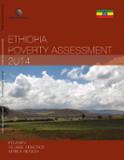Ethiopia poverty assessment 2014

In 2000 Ethiopia had one of the highest poverty rates in the world, with 56 percent of the population living on less than United States (U.S.) $1.25 purchasing power parity (PPP) a day. Ethiopian households experienced a decade of remarkable progress in wellbeing since then and by the start of this decade less than 30 percent of the population was counted as poor. This poverty assessment documents the nature of Ethiopia s success and examines its drivers. Agricultural growth drove reductions in poverty, bolstered by pro-poor spending on basic services, and effective rural safety nets. However, although there is some evidence of manufacturing growth starting to reduce poverty in urban centers at the end of the decade, structural change has been remarkably absent from Ethiopia s story of progress. The poverty assessment looks forward asking what will be needed to end extreme poverty in Ethiopia. In addition to the current successful recipe of agricultural growth and pro-poor spending, the role of the non-farm rural sector, migration, urban poverty reduction, and agricultural productivity gains for women are considered.
